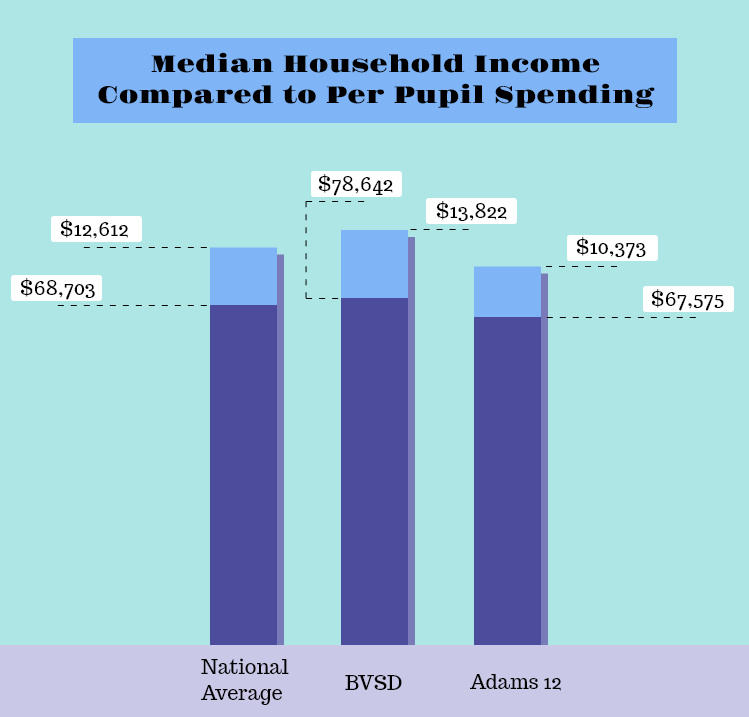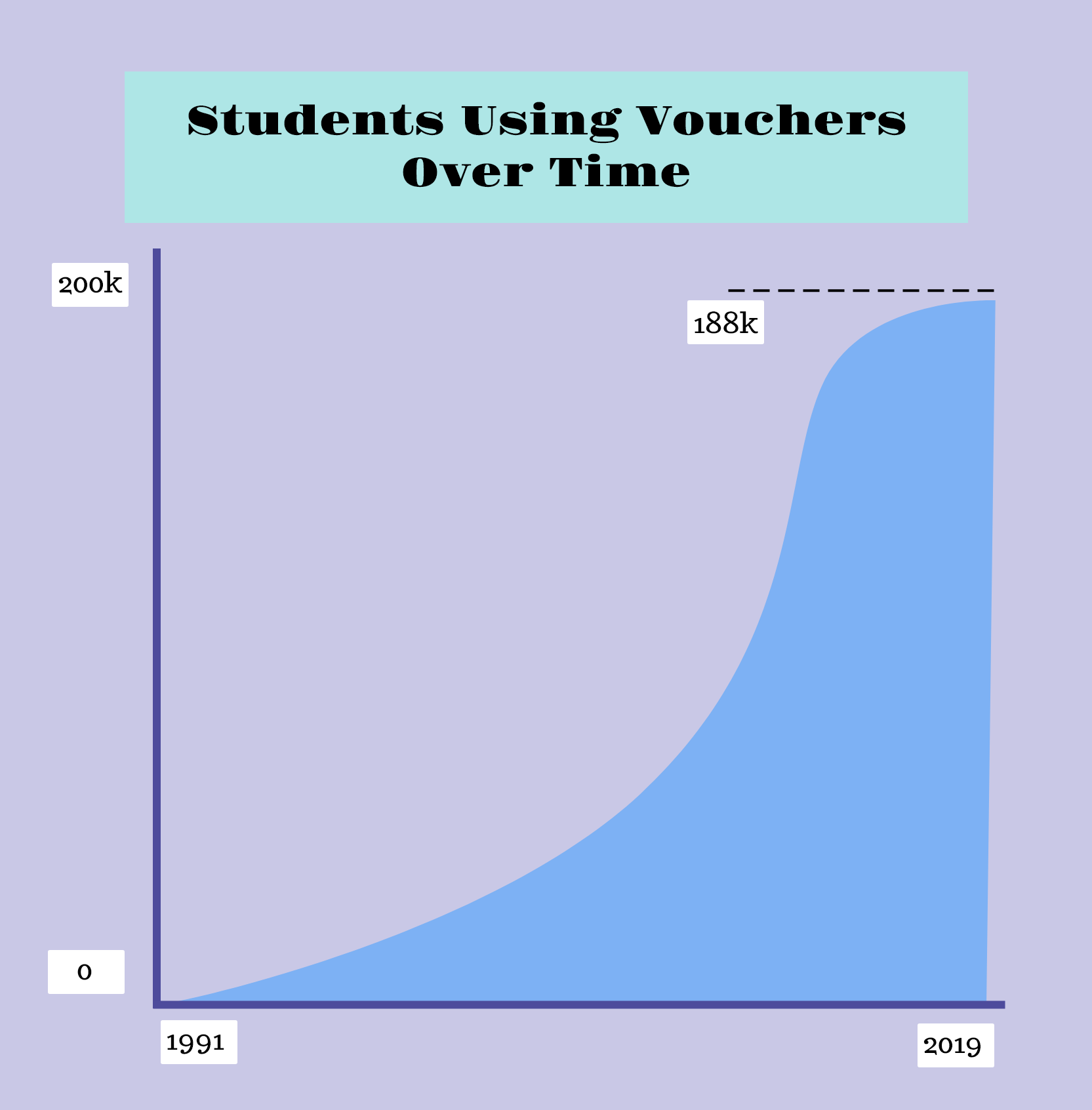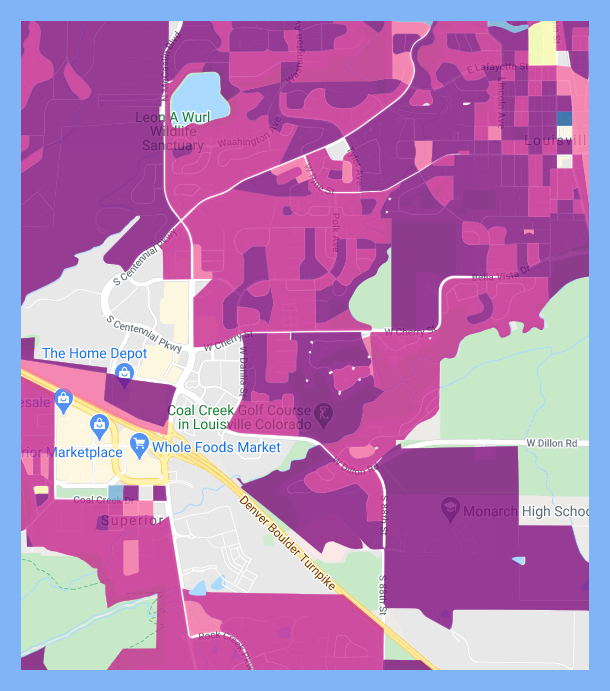I will start this story at the time I had an immense shock leaving my friends and family of Miami, Florida in September of 2010. I was on my way to Monarch K-8, a school situated in Louisville, Colorado, as a part of the Boulder Valley School District. I lived just a few miles away—within biking distance of the school—in the town of Superior. My family comprising my parents, my younger brother, and myself, all living in a small two-bedroom apartment which we quickly had to move out of just a year later when the third child of our family was on its way. This meant we had to move, as we could no longer afford to live in Superior.
We resided in a small, fixer-upper house in Westminster, which was a part of an entirely different school district: Adams 12. My mom was willing to sacrifice her mornings after working the night shift to take me to the school I wanted to go to, which was still Monarch K-8, and soon enough, Monarch High School. How was this possible? I was a part of a different school district, yet still able to go to my school of choice in BVSD. As long as you have a means of transportation and the school has room for you, you can open enroll in schools outside of your district, in the state of Colorado at least. This is important because I know that the school pulled some strings to enroll me at Monarch K-8, and eventually Monarch High School.
I liked Monarch. Both of them. And my mom knew it was important to me to enroll there, and I’m sure the administration knew the level of prestige the school had as well. Louisville and Superior are relatively affluent neighborhoods that all my friends lived in. They were all white, with middle-to-upper-middle-class parents, none of whom were divorced. All my friends could drive and had their own cars, hanging out after school events. They all had good grades and took AP classes while also being a part of National Junior Honor Society. Unfortunately, this was not me. My accomplishment was being a year ahead in math while scraping by with Cs. I took one AP class and some ‘advanced’ versions of other classes, but never as many as my peers. While my friends saw each other outside of school, I was stuck at home in fear of my dad. I didn’t fit in. I came into high school as a low-class, underperforming student.
At the end of my sophomore year of high school, we moved to Erie after my mom’s business became successful. Our house was big and in a great neighborhood associated with good schools. My siblings went to Monarch K-8 for one more year before switching to their new school in the Saint Vrain Valley School District. Though this didn’t change my situation at home, I learned I could graduate early—as a junior. Through motivation to escape my situation at home, I took on the extra classes and got the best grades I had ever gotten in high school, though not straight As. Most, if not all, of my friends were straight-A students having GPAs above 4.0 from their AP and advanced classes. My GPA without the extra weight of advanced classes was a 2.7, something unheard of among my peers. Then, I applied to CU Boulder and I got in. My only extracurricular activity was marching band, while my friends had much more, like NJHS or various other leadership roles.
Whatever way you cut it, my grades were not good. Compared to my friends, I had failed. However, I’m now in a spot where I can expect financial security and job satisfaction perhaps for the rest of my life; I will end up where my friends were projected to end up. What gives? I know this introduction was long, but I feel it instrumental to the essay that I give my experience going through this system and where I ended up as a result.
Onto the good stuff! Who do we blame for this? Will Mikail ever stop using questions as a rhetoric device and just be direct? Absolutely not.
The problem, here, is not that I was given the opportunity to go to Monarch. The problem is that the rest of the students who open enrolled were not allowed to go to the school of their choice and were stuck with their neighborhood school they didn’t like. The students who didn’t get a choice deserve this choice. I will introduce school choice, explain it's lack of accessibility to the lower class, and highlight the benefits of complete school choice. Had school choice been implemented, there would have been no issues continuing my enrollment at Monarch High School without relying on convncing those involved with open enrollment to pick me.

A comparison of district household income to district per pupil spending (United States Census, 2020; Office of Elementary & Secondary Education, 2020).
The first thing I want you to pay attention to is this graph and dissect the numbers given to us by the US census and Colorado's per-pupil expenditures tool. Compared to the national average, Adams 12 makes just below $1,000 the median income and spends more than $2,000 less than the national average. Meanwhile, BVSD parents earn almost $10,000 more than the national average while also still paying $800 more per pupil. This makes sense when you understand that school districts are paid for by federal and state funds as well as property taxes. Those who earn more can pay more in property taxes and therefore are investing more into neighboring schools.
Relating back to my school experiences, on top of the extra wealth from nearby neighborhoods paying to schools indirectly through taxes, parents also pay to schools directly. In marching band, we would raise thousands of dollars by going door-to-door asking for donations to fund our program. Our school also hosted an annual marching band competition to earn even more money for the program with parents volunteering. All this aid for our school came from parents who were able to donate their extra money or time. It should be acknowledged that oftentimes, parents of students in lower-income areas don't have the time or disposable income to help fund programs like a marching band.
Food stamps are a way to get government assistance in buying food. Food stamps give you the choice to buy your food at whatever grocery store you please. Much like food stamps, school vouchers give parents the ability to send their child to the private school of their choice. According to Valerie Strauss (2017) with vouchers "families can receive government funding, at differing amounts according to the program... that can be used to pay for tuition at private schools." The dollar amount of the voucher varies, but it's typically less than what the state allots per student (Kelly, 2020).

Growth of students using school vouchers from 1991 to 2019 (EdChoice, 2019).
School choice is getting more and more popular as time goes on according to EdChoice (2019), but this form only concerns private schools—and often still requires parents to pay some amount out of pocket. Allowing students to choose schools outside of their districts is still an uncommon practice. Many states allow students to enroll in schools other than their neighborhood school, but still in the same district, given they have means of getting there and back home. Colorado has certain restrictions on extracurricular activities for those who are open enrolling in a district other than their designated one. You don't get as much choice as you're led to believe.
We already have a form of public school choice, and unfortunately, higher income families have a substantial advantage over this. This is a recurring theme with the current system. Higher incomes offer mobility to parents, allowing them to live near any schools they want and fund whatever programs they desire in those schools.
To truly make school choice live up to its name, it must be stretched to allow students to enroll in any school of their choice. Even open enrolling—which allows students right now to enroll in schools in other districts—is dependent on in-district enrollments and school capacity; those in the school district get priority. In true school choice fashion, students would be able to enroll in any school with the only restriction really being school capacity. However, the only limiting factor here for the student is whether or not they can be reliably transported to and from the school.
But what happens to the schools people don't enroll in? Just like a grocery store, they go out of business. This is not a bad thing. If a grocery store fails, that usually means there is a better value nearby; you should go to that value (Blakely, 2017). Those schools did not provide as good a value as surrounding schools, or perhaps even schools farther away that draw in many students. This brings more money as well as more students to those thriving schools. This may create competition, but ultimately it's a competition to provide students better educations. The Center for Education Reform (2011) expands on this grocery store idea:
This principle can be found anywhere you look, from cars to colleges, but it’s largely absent in our public school system and the poor results are evident, especially in the centers of American culture – our cities.
When you draw in many students from many different neighborhoods, you draw in diversity. I was in a school with a vast majority of the student body being white. Using a resource like justicemap.org, it's plainly obvious that schools do not represent a very diverse student body, as the parents in nearby neighborhoods do not represent a very diverse population, either. Unlocking the ability for students to cross over into other districts, these nearby neighborhoods no longer represent the student body. Student bodies become more diverse.

The Justice Map near Monarch High School. Neighborhoods range from 70% to greater than 90% white.
Diversity in the classroom is more important than you may think (unless you are Alexandra McGrath, the person grading this... in which case it is just as important as you may think). Diversity has countless benefits in schools, like how it promotes awareness of diverse cultures within the classroom while preparing them for diverse workplaces once they are outside of school (Drexel Univesity School of Education, 2015). This is a form of social efficiency, which prepares students to be excellent workers outside of school to best serve society. Students are an investment who will make returns once they leave the education system. Preparing students for a diverse workplace is an investment which does have returns. Outside of compassion, this is smart economically—the goal of social efficiency (Labaree, 1997).
America is on the path to school choice. With more and more students using school choice to enroll in private institutions, more and more people are beginning to ask why they cannot do the same with any other public school. Allowing students to enroll in better schools while no longer funding worse performing schools only benefits them. Having these schools represent a more diverse population is even better. I had school choice and it allowed me to get the education I as well as my parents desired. It allowed me to take a wide variety of classes taught by highly qualified teachers which I would not have had without open enrollment. This class has helped me realize that what I had was not normal. What I had was an excellent school and a secure future because of this excellent school. Were it not for my successful open enrollment, I cannot say I would be where I am right now. I thought good grades were all you needed to carry you to prosperity, when in fact the reality is where you go to school can have a significant effect. Too much of an effect for our education system to be regarded as fair and equal. My school was my choice, and it should be everyone else's.
Image Sources
All images were either created by me, or sampled from justicemap.org
References
Blakely, J. (2017, 04 17). How School Choice Turns Education Into a Commodity. Retrieved from The Atlantic: https://www.theatlantic.com/education/archive/2017/04/is-school-choice-really-a-form-of-freedom/523089/
Center for Education Reform. (2011, 11). JUST THE FAQS—SCHOOL CHOICE. Retrieved from Center for Education Reform: https://edreform.com/2011/11/just-the-faqs-school-choice/
Drexel University School of Education. (2015). THE IMPORTANCE OF DIVERSITY & CULTURAL AWARENESS IN THE CLASSROOM. Retrieved from Drexel University School of Education: https://drexel.edu/soe/resources/student-teaching/advice/importance-of-cultural-diversity-in-classroom/#:~:text=Students%20Feel%20More%20Confident%20and,in%20their%20interactions%20with%20others.
EdChoice. (2019, 05 29). Fast Facts on School Choice. Retrieved from ENGAGE by EdChoice: http://www.local.edchoice.milesherndon.com/our-resources/fast-facts
Kelly, K. (2020). School Vouchers: What You Need to Know. Retrieved from Understood: https://www.understood.org/en/school-learning/your-childs-rights/basics-about-childs-rights/school-vouchers-what-you-need-to-know
Labaree, D. F. (1997). Public Goods, Private Goods: The American Struggle Over Educational Goals. American Educational Research Journal, 39-81.
Office of Elementary & Secondary Education. (2020, 09 16). Per Pupil Expenditures: Colorado. Retrieved from Office of Elementary & Secondary Education: https://oese.ed.gov/ppe/colorado/
Strauss, V. (2017, 05 22). What School Choice Means in the Era of Trump and DeVos. Retrieved from The Washington Post: https://www.washingtonpost.com/news/answer-sheet/wp/2017/05/22/what-school-choice-means-in-the-era-of-trump-and-devos/
United States Census Bureau. (2019). QuickFacts. Retrieved from United States Census Bureau: https://www.census.gov/quickfacts/
United States Census Bureau. (2020, 09 15). Income and Poverty in the United States: 2019. Retrieved from United States Census Bureau: https://www.census.gov/library/publications/2020/demo/p60-270.html#:~:text=Median%20household%20income%20was%20%2468%2C703,and%20Table%20A%2D1).